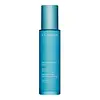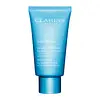What's inside
What's inside
 Key Ingredients
Key Ingredients

 Benefits
Benefits

 Concerns
Concerns

 Ingredients Side-by-side
Ingredients Side-by-side

Water
Skin ConditioningCaprylic/Capric Triglyceride
MaskingRosa Damascena Flower Water
MaskingBetaine
HumectantPropanediol
SolventGlycerin
HumectantDicaprylyl Carbonate
EmollientButylene Glycol
HumectantSucrose Polystearate
EmollientPotassium Cetyl Phosphate
EmulsifyingCaprylyl Glycol
EmollientCarbomer
Emulsion StabilisingParfum
MaskingSodium Hyaluronate
HumectantEthylhexylglycerin
Skin ConditioningTocopheryl Acetate
AntioxidantCetyl Palmitate
EmollientPotassium Sorbate
PreservativeDisodium EDTA
Sodium Hydroxide
BufferingBenzyl Alcohol
PerfumingKalanchoe Pinnata Leaf Extract
MaskingMarrubium Vulgare Extract
Skin ConditioningCitric Acid
BufferingPhenethyl Alcohol
MaskingFurcellaria Lumbricalis Extract
Skin ConditioningSodium Benzoate
MaskingDehydroacetic Acid
PreservativeLapsana Communis Flower/Leaf/Stem Extract
Skin ConditioningMaris Sal
Skin ConditioningWater, Caprylic/Capric Triglyceride, Rosa Damascena Flower Water, Betaine, Propanediol, Glycerin, Dicaprylyl Carbonate, Butylene Glycol, Sucrose Polystearate, Potassium Cetyl Phosphate, Caprylyl Glycol, Carbomer, Parfum, Sodium Hyaluronate, Ethylhexylglycerin, Tocopheryl Acetate, Cetyl Palmitate, Potassium Sorbate, Disodium EDTA, Sodium Hydroxide, Benzyl Alcohol, Kalanchoe Pinnata Leaf Extract, Marrubium Vulgare Extract, Citric Acid, Phenethyl Alcohol, Furcellaria Lumbricalis Extract, Sodium Benzoate, Dehydroacetic Acid, Lapsana Communis Flower/Leaf/Stem Extract, Maris Sal
Water
Skin ConditioningGlycerin
HumectantButylene Glycol
HumectantStearic Acid
CleansingC12-15 Alkyl Benzoate
AntimicrobialDicaprylyl Carbonate
EmollientBetaine
HumectantCetearyl Ethylhexanoate
EmollientCetyl Alcohol
EmollientPropanediol
SolventCI 77891
Cosmetic ColorantCeteareth-12
EmulsifyingPhenoxyethanol
PreservativeXylitylglucoside
HumectantPolyacrylamide
Parfum
MaskingAnhydroxylitol
HumectantCarbomer
Emulsion StabilisingSynthetic Fluorphlogopite
C13-14 Isoparaffin
EmollientEthylhexylglycerin
Skin ConditioningTocopheryl Acetate
AntioxidantTromethamine
BufferingXylitol
HumectantCaprylhydroxamic Acid
Sodium Hyaluronate
HumectantGlyceryl Acrylate/Acrylic Acid Copolymer
HumectantDisodium EDTA
Laureth-7
EmulsifyingGlucose
HumectantKalanchoe Pinnata Leaf Extract
MaskingAlumina
AbrasiveAlcohol
AntimicrobialCitric Acid
BufferingTris(Tetramethylhydroxypiperidinol)Citrate
StabilisingSodium Benzoate
MaskingPotassium Sorbate
PreservativeCI 42090
Cosmetic ColorantWater, Glycerin, Butylene Glycol, Stearic Acid, C12-15 Alkyl Benzoate, Dicaprylyl Carbonate, Betaine, Cetearyl Ethylhexanoate, Cetyl Alcohol, Propanediol, CI 77891, Ceteareth-12, Phenoxyethanol, Xylitylglucoside, Polyacrylamide, Parfum, Anhydroxylitol, Carbomer, Synthetic Fluorphlogopite, C13-14 Isoparaffin, Ethylhexylglycerin, Tocopheryl Acetate, Tromethamine, Xylitol, Caprylhydroxamic Acid, Sodium Hyaluronate, Glyceryl Acrylate/Acrylic Acid Copolymer, Disodium EDTA, Laureth-7, Glucose, Kalanchoe Pinnata Leaf Extract, Alumina, Alcohol, Citric Acid, Tris(Tetramethylhydroxypiperidinol)Citrate, Sodium Benzoate, Potassium Sorbate, CI 42090
Ingredients Explained
These ingredients are found in both products.
Ingredients higher up in an ingredient list are typically present in a larger amount.
Betaine is a common humectant (a substance that promotes retention of moisture). It's known to be gentle on the skin and can help balance hydration.
This ingredient is best for improving hydration and soothing irritated skin. Studies also show it helps even out skin tone.
Fun fact: Betaine is naturally created in the skin and body. The kind found within cosmetic products can be either plant-derived or synthetic.
Another name for betaine is trimethylglycine.
Learn more about BetaineButylene Glycol (or BG) is used within cosmetic products for a few different reasons:
Overall, Butylene Glycol is a safe and well-rounded ingredient that works well with other ingredients.
Though this ingredient works well with most skin types, some people with sensitive skin may experience a reaction such as allergic rashes, closed comedones, or itchiness.
Learn more about Butylene GlycolCarbomer is a polymer of acrylic acid. Its main role is to create a gel consistency.
A high amount of carbomer can cause pilling or balling up of products. Don't worry, most products contain 1% or less of carbomer.
Citric Acid is an alpha hydroxy acid (AHA) naturally found in citrus fruits like oranges, lemons, and limes.
Like other AHAs, citric acid can exfoliate skin by breaking down the bonds that hold dead skin cells together. This helps reveal smoother and brighter skin underneath.
However, this exfoliating effect only happens at high concentrations (20%) which can be hard to find in cosmetic products.
Due to this, citric acid is usually included in small amounts as a pH adjuster. This helps keep products slightly more acidic and compatible with skin's natural pH.
In skincare formulas, citric acid can:
While it can provide some skin benefits, research shows lactic acid and glycolic acid are generally more effective and less irritating exfoliants.
Most citric acid used in skincare today is made by fermenting sugars (usually from molasses). This synthetic version is identical to the natural citrus form but easier to stabilize and use in formulations.
Read more about some other popular AHA's here:
Learn more about Citric AcidDicaprylyl Carbonate comes from carbonic acid and caprylyl alcohol, a fatty alcohol. It is an emollient and gives skin a velvet feel. The sources of Dicaprylyl Carbonate may be synthetic or from animals.
As an emollient, Dicaprylyl Carbonate creates a film on the skin. This film traps moisture in, keeping your skin soft and hydrated.
Disodium EDTA plays a role in making products more stable by aiding other preservatives.
It is a chelating agent, meaning it neutralizes metal ions that may be found in a product.
Disodium EDTA is a salt of edetic acid and is found to be safe in cosmetic ingredients.
Learn more about Disodium EDTAEthylhexylglycerin (we can't pronounce this either) is commonly used as a preservative and skin softener. It is derived from glyceryl.
You might see Ethylhexylglycerin often paired with other preservatives such as phenoxyethanol. Ethylhexylglycerin has been found to increase the effectiveness of these other preservatives.
Glycerin is already naturally found in your skin. It helps moisturize and protect your skin.
A study from 2016 found glycerin to be more effective as a humectant than AHAs and hyaluronic acid.
As a humectant, it helps the skin stay hydrated by pulling moisture to your skin. The low molecular weight of glycerin allows it to pull moisture into the deeper layers of your skin.
Hydrated skin improves your skin barrier; Your skin barrier helps protect against irritants and bacteria.
Glycerin has also been found to have antimicrobial and antiviral properties. Due to these properties, glycerin is often used in wound and burn treatments.
In cosmetics, glycerin is usually derived from plants such as soybean or palm. However, it can also be sourced from animals, such as tallow or animal fat.
This ingredient is organic, colorless, odorless, and non-toxic.
Glycerin is the name for this ingredient in American English. British English uses Glycerol/Glycerine.
Learn more about GlycerinWe don't have a description for Kalanchoe Pinnata Leaf Extract yet.
Parfum is a catch-all term for an ingredient or more that is used to give a scent to products.
Also called "fragrance", this ingredient can be a blend of hundreds of chemicals or plant oils. This means every product with "fragrance" or "parfum" in the ingredients list is a different mixture.
For instance, Habanolide is a proprietary trade name for a specific aroma chemical. When used as a fragrance ingredient in cosmetics, most aroma chemicals fall under the broad labeling category of “FRAGRANCE” or “PARFUM” according to EU and US regulations.
The term 'parfum' or 'fragrance' is not regulated in many countries. In many cases, it is up to the brand to define this term.
For instance, many brands choose to label themselves as "fragrance-free" because they are not using synthetic fragrances. However, their products may still contain ingredients such as essential oils that are considered a fragrance by INCI standards.
One example is Calendula flower extract. Calendula is an essential oil that still imparts a scent or 'fragrance'.
Depending on the blend, the ingredients in the mixture can cause allergies and sensitivities on the skin. Some ingredients that are known EU allergens include linalool and citronellol.
Parfum can also be used to mask or cover an unpleasant scent.
The bottom line is: not all fragrances/parfum/ingredients are created equally. If you are worried about fragrances, we recommend taking a closer look at an ingredient. And of course, we always recommend speaking with a professional.
Learn more about ParfumPotassium Sorbate is a preservative used to prevent yeast and mold in products. It is commonly found in both cosmetic and food products.
This ingredient comes from potassium salt derived from sorbic acid. Sorbic acid is a natural antibiotic and effective against fungus.
Both potassium sorbate and sorbic acid can be found in baked goods, cheeses, dried meats, dried fruit, ice cream, pickles, wine, yogurt, and more.
You'll often find this ingredient used with other preservatives.
Learn more about Potassium SorbatePropanediol is an all-star ingredient. It softens, hydrates, and smooths the skin.
It’s often used to:
Propanediol is not likely to cause sensitivity and considered safe to use. It is derived from corn or petroleum with a clear color and no scent.
Learn more about PropanediolSodium Benzoate is a preservative. It's used in both cosmetic and food products to inhibit the growth of mold and bacteria. It is typically produced synthetically.
Both the US FDA and EU Health Committee have approved the use of sodium benzoate. In the US, levels of 0.1% (of the total product) are allowed.
Sodium benzoate works as a preservative by inhibiting the growth of bacteria inside of cells. It prevents the cell from fermenting a type of sugar using an enzyme called phosphofructokinase.
It is the salt of benzoic acid. Foods containing sodium benzoate include soda, salad dressings, condiments, fruit juices, wines, and snack foods.
Studies for using ascorbic acid and sodium benzoate in cosmetics are lacking, especially in skincare routines with multiple steps.
We always recommend speaking with a professional, such as a dermatologist, if you have any concerns.
Learn more about Sodium BenzoateSodium Hyaluronate is hyaluronic acid's salt form. It is commonly derived from the sodium salt of hyaluronic acid.
Like hyaluronic acid, it is great at holding water and acts as a humectant. This makes it a great skin hydrating ingredient.
Sodium Hyaluronate is naturally occurring in our bodies and is mostly found in eye fluid and joints.
These are some other common types of Hyaluronic Acid:
Learn more about Sodium HyaluronateTocopheryl Acetate is AKA Vitamin E. It is an antioxidant and protects your skin from free radicals. Free radicals damage the skin by breaking down collagen.
One study found using Tocopheryl Acetate with Vitamin C decreased the number of sunburned cells.
Tocopheryl Acetate is commonly found in both skincare and dietary supplements.
Learn more about Tocopheryl AcetateWater. It's the most common cosmetic ingredient of all. You'll usually see it at the top of ingredient lists, meaning that it makes up the largest part of the product.
So why is it so popular? Water most often acts as a solvent - this means that it helps dissolve other ingredients into the formulation.
You'll also recognize water as that liquid we all need to stay alive. If you see this, drink a glass of water. Stay hydrated!
Learn more about Water